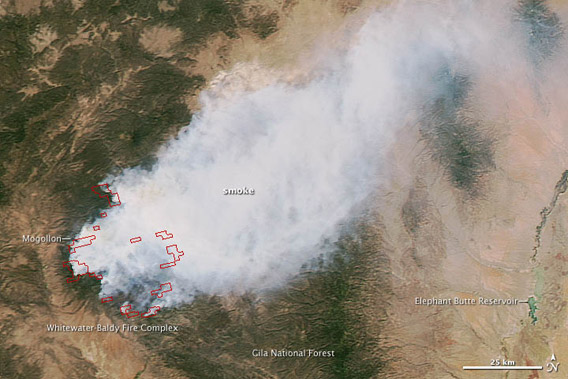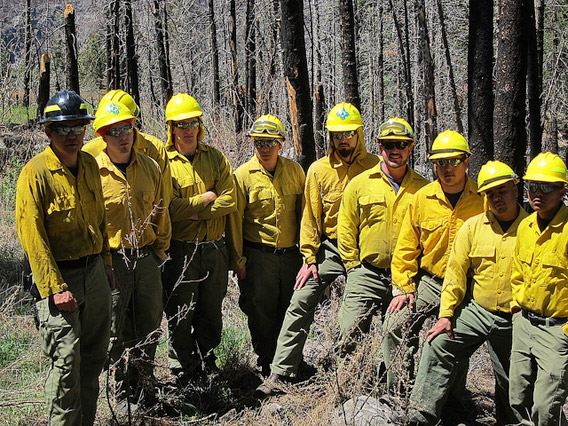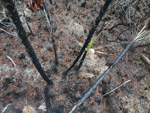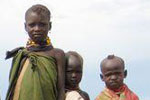
New Mexico’s biggest fire ever as seen on May 29th from NASA’s Aqua satellite. Photo by: NASA.
To date, around 250,000 acres (101,000 hectares) of the Gila Forest in New Mexico have burned in the state’s largest fire ever recorded. Begun on May 16th due to lightning strikes, the unprecedented fire has likely been made possible by a combination of land-use changes, unflagging drought, and climate change.
While, the steep terrain of the Gila Forest has made the fire difficult, if not impossible, to battle, over a 1,200 firefighters are in region attempting to gain control of the conflagration. Around 10 percent of the fire is contained.
A recent study in The Holocene, which refers to the new geologic period in whereby humans have left their mark on the Earth, has found that the appearance of megafires in the U.S. Southwest is truly abnormal. Looking at tree-ring data and fire-scars the scientists could find no record of such fires going back 1,500 years.
The researchers blame the current rise of the megafires on climate change and the stifling of small fires. Climate change has not only raised temperatures but also contributed to drought in the region. In addition a century of suppressing forest fires, cattle ranching, and forest clearing has resulted in accumulation of dry vegetation and wood, ready to burn. Forest canopies are even at risk of burning in these unprecedented megafires, as opposed to the past where smaller and weaker fires spread through a forest every few decades.
“The fires cleaned up the understory, kept it very open, and made it resilient to climate changes because even if there was a really severe drought, there weren’t the big explosive fires that burn through the canopy because there were no fuels to take it up there,” Christopher I. Roos with Southern Methodist University said ub a oress release. “The trees had adapted to frequent surface fires, and adult trees didn’t die from massive fire events because the fires burned on the surface and not in the canopy.”
New Mexico’s second largest fire on record occurred just last year and burned 156,000 acres (63,000 hectares). Arizona also saw its biggest fire ever in 2011: the Wallow Fire burned 540,000 acres (218,500 hectares). A recent UN Report warned of a rise in megafires worldwide due to climate change and, in the tropics, deforestation.

New Mexico firefighters gather to highlight the connection between megafires in their state and climate change. The photo was taken as apart of ‘Connect the Dots’ day organized by 350.org. It must be noted that this photo was taken a few weeks before the megafire in the Gila National Forest, which is now New Mexico’s worst. Photo courtesy of: 350.org.
Related articles
Oil company blamed for fire in Belize national park

(05/01/2012) At the end of March in southern Belize the sun beats down through blackened trees onto what was the only known low-lying sphagnum moss bog in Central America. Now it is an expanse of ash and pale crusts of burned moss onto which dragonflies settle briefly before passing on. Fire spread through the area at the end of February 2012, and since then reeds have begun to sprout, but otherwise it remains a scene of devastation with no sign that the moss is regenerating.
Fires raging in peat forest at center of legal case in Indonesia
(03/27/2012) Fires are burning in a peat forest that is the center of contentious court case.
Killer Russian heatwave product of climate change
(10/26/2011) Last year’s Russian heatwave and drought resulted in vast wildfires and a morality rate that was 56,000 people higher than the same period in 2009. Now, researchers have published a paper in the Proceedings of the National Academy of Sciences (PNAS) that finds the heatwave would very likely have never happened if not for climate change. The study flies in the face of previous research by the National Oceanic and Atmospheric Administration (NOAA) that concluded the heatwave was simply due to natural variation and not a warming world.
Restoring tropical forests by keeping fire far away
(09/26/2011) Keeping fire at bay could be key to reforesting abandoned land in the tropics, according to a new study in mongabay.com’s open access journal Tropical Conservation Science. Measuring the recovery of regenerating forests in Kibale National Park in Uganda, the study found that suppressing fire allowed the forest to come back over a period of decades. Given the role rainforests play in sequestering carbon and safeguarding biodiversity, the study argues that reforesting abandoned land in the tropics should be a global policy and controlling fire may be an simple and largely inexpensive method to achieve the goal.
Repeated burning undercuts Amazon rainforest recovery
(09/26/2011) The Amazon rainforest can recover fromlogging, but has a far more difficult time returning after repeated burning, reports a new study in mongabay.com’s open-access journal Tropical Conservation Science. In areas where the Amazon had been turned to pasture and was subject to repeated burning, Visima trees become the dominant tree inhibiting the return of a biodiverse forest. The key to the sudden domination of Visima trees, according to the study, is that these species re-sprout readily following fires; a capacity most other Amazonian trees lack.
Chart: US suffers record drought
(08/01/2011) An exceptional drought is still scorching major parts of Texas, New Mexico, Oklahoma, and Louisiana. A new report from the National Drought Mitigation Center finds that over July, nearly 12 percent of the US saw exceptional drought conditions, the highest record since monitoring began a dozen years. Exceptional drought is the worst possible on a 5-scale drought scale.
Adaptation, justice and morality in a warming world

(07/28/2011) If last year was the first in which climate change impacts became apparent worldwide—unprecedented drought and fires in Russia, megaflood in Pakistan, record drought in the Amazon, deadly floods in South America, plus record highs all over the place—this may be the year in which the American public sees climate change as no longer distant and abstract, but happening at home. With burning across the southwest, record drought in Texas, majors flooding in the Midwest, heatwaves everywhere, its becoming harder and harder to ignore the obvious. Climate change consultant and blogger, Brian Thomas, says these patterns are pushing ‘prominent scientists’ to state ‘more explicitly that the pattern we’re seeing today shows a definite climate change link,’ but that it may not yet change the public perception in the US.
Yellowstone burning: big fires to hit world’s first national park annually by 2050
(07/25/2011) An icon of conservation and wilderness worldwide, Yellowstone National Park could see its ecosystem flip due to increased big fires from climate change warn experts in a new study in the Proceedings of the National Academy of Science (PNAS). A sudden increase in large fires—defined as over 200 hectares (500 acres)—by mid-century could shift the Yellowstone ecosystem from largely mature conifer forests to younger forests with open shrub and grasslands.